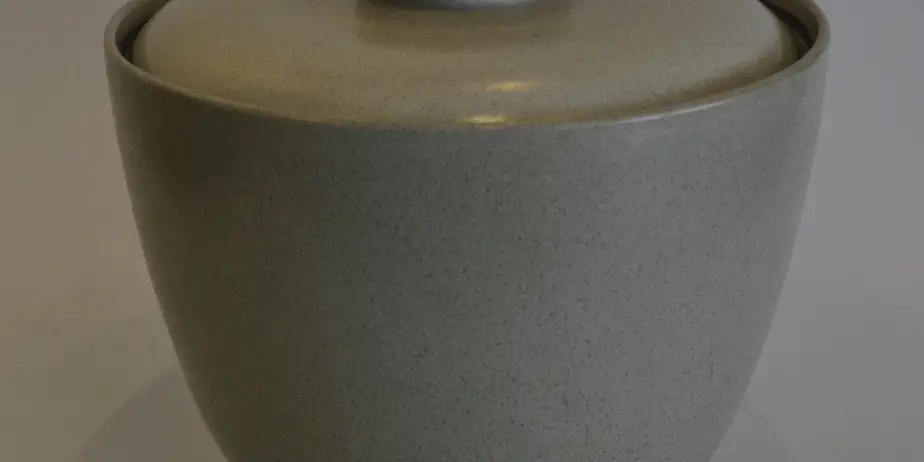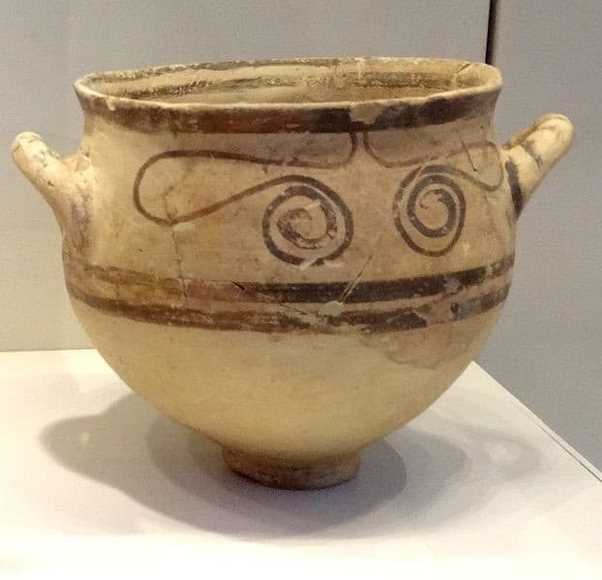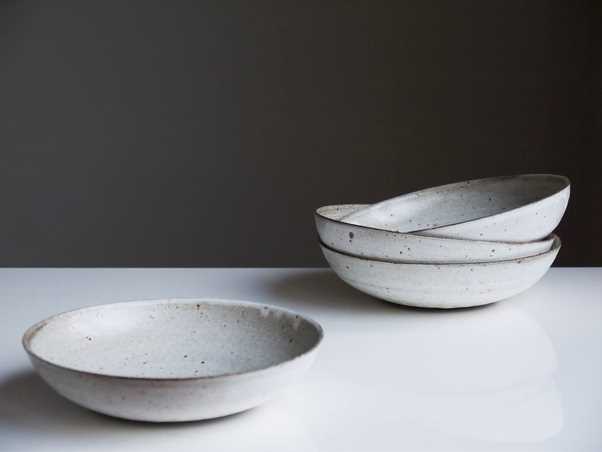Ceramic and pottery are two terms that are often used interchangeably, but they actually have distinct meanings and applications. While both involve the use of clay as a primary material, pottery refers specifically to objects made from fired clay that are intended for practical use, such as bowls, cups, and plates. Ceramics, on the other hand, encompasses a broader range of objects made from clay and other materials, including decorative sculptures, tiles, and even non-functional pieces of art.
One of the key differences between pottery and ceramics is the firing process. In pottery, the clay is typically fired at a lower temperature, which results in a more porous and less durable finished product. This makes pottery ideal for vessels that need to hold liquids or foods, as the porous nature of the clay allows for the absorption of moisture to prevent cracking and breaking. In contrast, the firing process for ceramics involves higher temperatures, making the finished product more vitrified and durable.
Another important distinction is the level of craftsmanship and artistic expression often associated with ceramics. While pottery can be utilitarian and simple in design, ceramics often push the boundaries of artistic expression. Ceramic artists use a variety of techniques, such as glazing, carving, and sculpting, to create unique and visually striking pieces. These pieces can range from functional objects with intricate patterns and designs to non-functional sculptures that explore abstract concepts or tell a story.
In conclusion, pottery and ceramics may share a common material, but they differ in their purpose, firing process, and level of artistic expression. Pottery focuses on practicality, while ceramics explore creativity and aesthetics. By understanding the distinction between the two, we can appreciate the unique qualities and beauty that each brings to the world of clay art.
Historical Significance
The art of pottery and ceramics has a rich historical significance. The origins of pottery can be traced back to the Neolithic period, around 10,000 BCE, when humans first began to settle down and transition from a nomadic lifestyle to a sedentary one. It was during this time that they discovered the art of making clay vessels for storage and cooking purposes.
Throughout history, pottery and ceramics have played a significant role in various civilizations. In ancient Mesopotamia, for example, pottery was not only used for practical purposes but also served as a form of artistic expression. Elaborate clay vessels adorned with intricate designs and symbols were created and used in religious ceremonies and rituals.
The ancient Egyptians also made extensive use of pottery, with clay vessels and containers found in tombs and burial sites. These vessels were believed to carry essential items for the afterlife.
The art of pottery and ceramics continued to evolve and flourish in ancient Greece and Rome. In Greece, pottery was an essential part of daily life, with different styles and techniques developed in different regions of the country. The use of ceramics in ancient Rome reached new heights, with the production of fine pottery and the invention of the technique of glazing, which allowed for more decorative and colorful pieces.
During the Middle Ages, the art of pottery and ceramics declined in Western Europe, but it continued to thrive in the Islamic world. Islamic pottery featured intricate calligraphic designs and geometric patterns, often using vibrant colors. The Islamic world played a crucial role in the development and spread of pottery and ceramics, with knowledge and techniques later being brought back to Europe during the Renaissance.
In more recent history, pottery and ceramics have become highly valued art forms. From the intricately painted Chinese porcelain to the delicate porcelain of Meissen in Germany, these ceramics have become treasured collectibles and pieces of art.
Today, the art of pottery and ceramics continues to be practiced and appreciated worldwide. Artists and potters continue to innovate and push the boundaries of what can be achieved with clay, with new techniques and styles constantly emerging.
Materials and Techniques
Both pottery and ceramics are made from clay, but they differ in the type of clay used and the techniques employed.
Pottery is typically made from earthenware clay, which is a low-fire clay that is rich in iron, making it porous and not waterproof. It is a popular choice for everyday objects like bowls, plates, and cups. Porcelain and stoneware are other types of clay used in pottery. Porcelain is a high-fire clay that is vitrified, giving it a glass-like finish and making it very durable. Stoneware clay is also high-fire clay, but it is less vitrified than porcelain.
Ceramics, on the other hand, can be made from a variety of clays, including earthenware, stoneware, porcelain, and terracotta. The main difference is in the firing temperature and the added materials. Ceramics are fired at higher temperatures than pottery, which makes them denser and more durable. Additionally, ceramics can incorporate other materials like glass, metal, and even precious stones.
Techniques used in pottery include hand-building, wheel throwing, and slip casting. Hand-building involves shaping the clay by hand, using methods like pinching, coiling, and slab construction. Wheel throwing is done on a pottery wheel, where the clay is shaped by hand while it spins. Slip casting is a technique where liquid clay is poured into a mould and allowed to dry and set.
Ceramic techniques are similar to pottery techniques, but they often involve more complex processes like glazing and firing multiple times. Glazing is the process of applying a thin layer of glass-like coating to the ceramic object to give it a smooth, glossy finish and make it waterproof. Firing is the process of heating the object in a kiln to a specific temperature, causing the clay to harden and the glaze to melt and bond with the surface.
In conclusion, pottery and ceramics differ in the type of clay used, firing temperature, and techniques employed. Pottery is often made from earthenware clay and fired at lower temperatures, while ceramics can be made from different types of clay and require higher firing temperatures. Both involve various techniques for shaping and finishing the clay, with ceramics usually involving more complex processes like glazing and multiple firings.
Functionality
Both pottery and ceramics have various functionalities, but they differ in terms of their primary uses.
Pottery:
- Pottery is primarily made for functional purposes.
- It is commonly used for creating vessels for cooking, storing, and serving food and beverages.
- Pottery items are typically designed to be heat resistant and can be used on stoves, ovens, and microwaves.
- It is also commonly used for creating tableware such as plates, bowls, cups, and mugs.
- Pottery can also be used for decorative purposes, such as creating vases, planters, and sculptures.
- Due to its functional purpose, pottery is often made with durable and sturdy materials to ensure its longevity.
Ceramics:
- Ceramics have a broader range of functionality compared to pottery.
- It is commonly used for creating both functional and decorative items.
- Functional ceramic items include bathroom fixtures like sinks, toilets, and tiles, as well as electrical insulators and mechanical parts.
- Ceramic tiles are widely used for flooring, walls, and other architectural applications.
- Ceramics are also commonly used in the creation of decorative items such as sculptures, pottery, and art pieces.
- Ceramic materials can vary greatly in terms of strength, durability, and heat resistance, depending on their composition and manufacturing process.
In summary, while pottery is primarily focused on functional purposes, ceramics have a wider range of functionalities and can be used in various industries and applications.
Aesthetics
Both pottery and ceramics are valued for their aesthetics. The artistic qualities of these crafts play a major role in their appeal and popularity.
Pottery: Pottery is known for its earthy and rustic aesthetic. It often features natural colors and textures, and has a handmade and imperfect look. Many people appreciate the unique character and charm of pottery, as it creates a sense of warmth and connection to the earth. In addition, pottery can also be adorned with decorative patterns and designs, adding a touch of creativity and individuality to each piece.
Ceramics: Ceramics, on the other hand, offer a much wider range of aesthetics due to the versatility of the materials used. Ceramic pieces can vary from sleek and modern to intricately detailed and ornate. They can be glazed or unglazed, smooth or textured, and can feature a variety of colors and patterns. The possibilities for creativity and expression in ceramics are endless, allowing artists to experiment with different forms, techniques, and surface treatments to achieve their desired aesthetic.
In both pottery and ceramics, the aesthetics can also be influenced by cultural and historical factors. Different regions and time periods have their own unique styles and traditions, resulting in a diverse range of aesthetics around the world.
Overall, both pottery and ceramics offer a wide range of aesthetics to suit different tastes and preferences. Whether you are drawn to the organic and rustic charm of pottery or the diverse and versatile aesthetics of ceramics, these crafts provide endless opportunities for artistic expression and appreciation.
Commercial Production
Commercial production of pottery and ceramics is a thriving industry, with manufacturers across the world producing a wide range of products that cater to various markets and consumer needs. The distinction between pottery and ceramics becomes particularly important in the context of commercial production.
Pottery:
- Pottery, traditionally made from clay, is often handcrafted by skilled artisans.
- Commercial pottery production involves large-scale manufacturing techniques.
- Mass production of pottery typically involves the use of molds to shape the clay into desired forms quickly and efficiently.
- Commercial pottery is often produced in factories equipped with specialized machinery for tasks such as mixing clay, forming vessels, and applying glazes.
- Pottery manufacturers may focus on creating functional objects like dishes, bowls, and mugs, or decorative pieces like vases and sculptures.
Ceramics:
- Ceramics, which can be made from a variety of materials including clay, are often manufactured through industrial processes.
- The production of ceramics may involve the use of powders or other raw materials that are mixed, formed, and then fired at high temperatures.
- Advanced technology and machinery are commonly used in the commercial production of ceramics, including automated kilns and specialized tools for shaping and finishing the products.
- The ceramics industry encompasses a broad range of products, including tiles, sanitaryware, electrical insulators, and even high-tech products like advanced ceramics used in aerospace and medical applications.
In summary, both pottery and ceramics have distinct roles in commercial production. Pottery often emphasizes handcraftsmanship and the creation of functional or decorative objects, while ceramics encompass a broader range of products and are often manufactured using industrial techniques and advanced materials.
Collecting and Value
Collecting pottery and ceramics has been a popular hobby for centuries. The value of these pieces can vary greatly, depending on factors such as rarity, condition, historical significance, and demand.
When it comes to pottery, collectors often seek out pieces from specific regions or time periods. For example, ancient Greek pottery is highly sought after for its historical and cultural significance. These pieces can be quite valuable, especially if they are in excellent condition.
Ceramics, on the other hand, can also hold significant value. Fine china and porcelain, for example, are highly collectible due to their delicate craftsmanship and association with luxury. Pieces made by renowned manufacturers such as Wedgwood or Royal Doulton can command high prices in the collector’s market.
When evaluating the value of pottery and ceramics, collectors consider various factors. The condition of the piece is crucial, as any damage or restoration can significantly affect its worth. Rarity is also an important consideration – the rarer the piece, the more desirable it is to collectors.
Additionally, the historical and cultural significance of a piece can make it more valuable. For example, a pottery vessel from an ancient civilization or a ceramic figurine from a renowned artist may fetch a higher price due to its historical importance.
Collecting pottery and ceramics can be both an enjoyable hobby and a potentially lucrative investment. However, it’s essential to do thorough research and consult experts in the field to ensure you’re making informed decisions when buying or selling these pieces.
FAQ:
What is the difference between pottery and ceramics?
The main difference between pottery and ceramics is that pottery refers to objects that are made from clay and hardened by firing, while ceramics refer to a broader category of objects that are made from various materials and hardened by firing.
Are pottery and ceramics the same thing?
No, pottery and ceramics are not the same thing. While all pottery is considered ceramics, not all ceramics are pottery. Ceramic is a broader term that encompasses a wide range of materials, including glass and porcelain.
Can you give examples of pottery?
Examples of pottery include clay pots, bowls, vases, and plates. Essentially, any object made from clay and hardened by firing can be considered pottery.
What materials are used in ceramics?
Various materials can be used in ceramics, including clay, glass, porcelain, and even metals. The exact materials used depend on the desired characteristics and intended use of the final object.
Is pottery considered an art form?
Yes, pottery is often considered an art form. Many skilled potters create unique and decorative pieces that are not only functional but also visually appealing. Pottery can be found in galleries and museums around the world.
Are ceramics more durable than pottery?
It depends on the specific materials used and the firing process. In general, ceramics made from glass or porcelain tend to be more durable and less likely to chip or break compared to pottery made from clay. However, there are also types of pottery that are highly durable and resistant to damage.
Can you make pottery without a kiln?
While a kiln is commonly used to fire pottery and harden the clay, it is possible to make pottery without a kiln. Alternative methods, such as air drying or using a microwave or oven, can be used to harden the clay, although these methods may not yield the same results as a kiln.


